- Karachay folk music
- Special tunes
- The classes of Karachay folk music
- Class 1: Rotating and plagal motion (№ 1−8)
- Class 2: One or two short lines and their variations with x(1)1 cadences (№ 9-37)
- Class 3: Four short lines with (1) main cadence (№ 38-53)
- Class 4: Four short lines with the first line ending on the key note, with a (pseudo) domed structure and 1(x)y cadences (№ 54−62)
- Class 5: Four short lines with (VII) main cadence (№ 63−70)
- Class 6: Four short lines with (2) and (b3) main cadences (№ 71−105)
- Class 7: Four short lines with (4/5) main cadences (№ 106−115)
- Class 8: Four short lines with (4/5) main cadence and a higher beginning (№ 116−138)
- Class 9: Four short lines with (7/8) main cadences (№ 139−145)
- Class 10: One- or two-lined tripodic tunes (№ 146–186)
- Class 11: Tunes with four tripodic lines (№ 187–199)
- Class 12: Jir tunes (№ 200–278)
- Class 13: Four long lines with arched (domed) structure (№ 279–287)
- Connections between Hungarian and Karachay folk music
Class 7: Four short low lines with (4/5) main cadences (№ 106−115)
The tunes in this class have the 4th or 5th degree for their cadence. One would easily jump to the conclusion that a higher second section will make traces of conjunct structures visible, that is, the register of the first part deviates from the register of the second – but that is not the case. What is frequent is the AB/AvC structure with the first and third lines being closely similar. We have already seen some structures like that in the apparently more archaic “domed” structures of Class 4. In build and character, these tunes resemble the tunes with the b3 main cadence in several regards.
Some melody contours are quite singular, e.g. concave first lines in № 107, 109 and 110, but the majority of the tunes descend conjunctly along the path designated by the cadences. Unlike the previous one, this class is widely varied, most groups only containing two, or at most three tunes. This class is practically a formal frame to keep together the tunes, so there is only an enumeration instead of an analysis below.
Group 7.1 has b3(4/5)b3 cadences. Two tunes, Ex.7.1 and № 106, belong here.
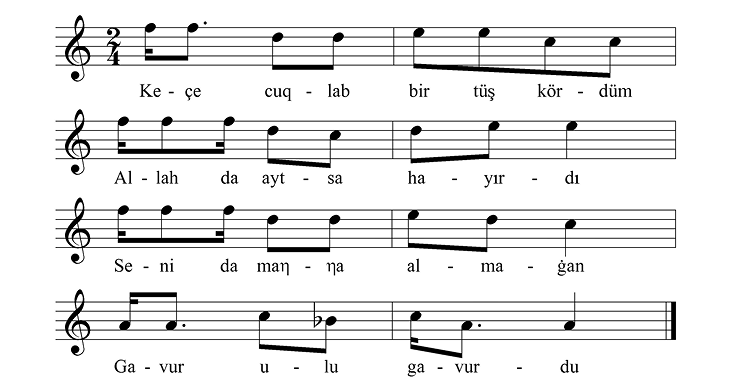
Ex.7.1. Four low lines with (5) main cadence
Group 7.2 also contains two tunes, Ex.7.2 and № 108 of Aeolian-Phrygian character, and № 113 moving a mixolydian scale. The cadences are 5/4(4)1/b3. The three melody outlines are quite different: Ex.7.2 displays a sequential descent, № 108 has two similar inner lines, and the first two lines of № 113 trace a finely rising hill.
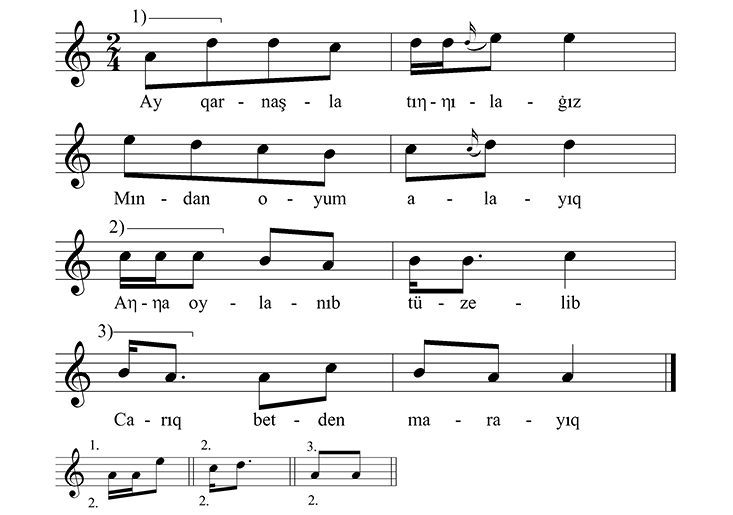
Ex.7.2. Four short low lines with (4) main cadence and sequential descent
The cadences of the three tunes in group 7.3 are 5(4)4/2. Two tunes have Aeolian-Phrygian character (Ex.7.3) and one (№ 114) has a major third in its scale. As will be seen, this cadential sequence is very frequent with jir tunes.
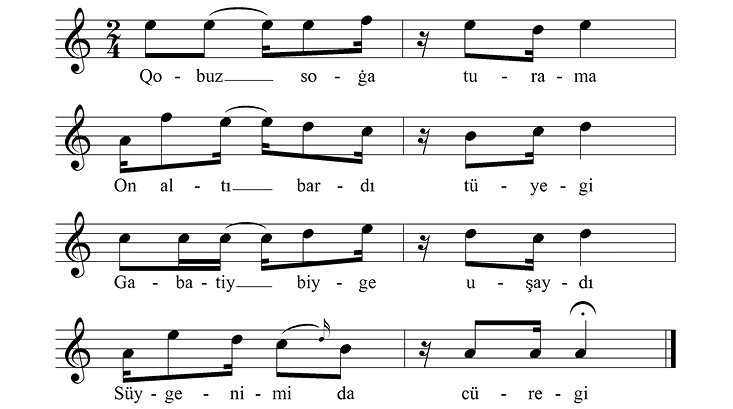
Ex.7.3. Four short lines with (4) main cadence>
The four tunes in group 7.4 have 5(5)x cadence. № 107 and № 110 are special with their first concave lines, but the rest are heterogeneous (№ 111,
Ex.7.4).
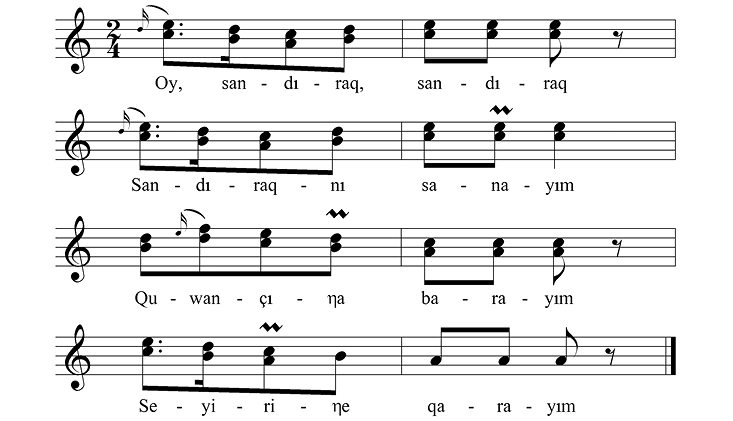
Ex.7.4. Four short lines with (5) main cadence and AABC form
Group 7.5 has three tunes with 4(5)x cadences: № 109 of minor character, and Ex.7.5 and № 115 of a mixolydian hue. This row of cadences is also frequent among the jir tunes.
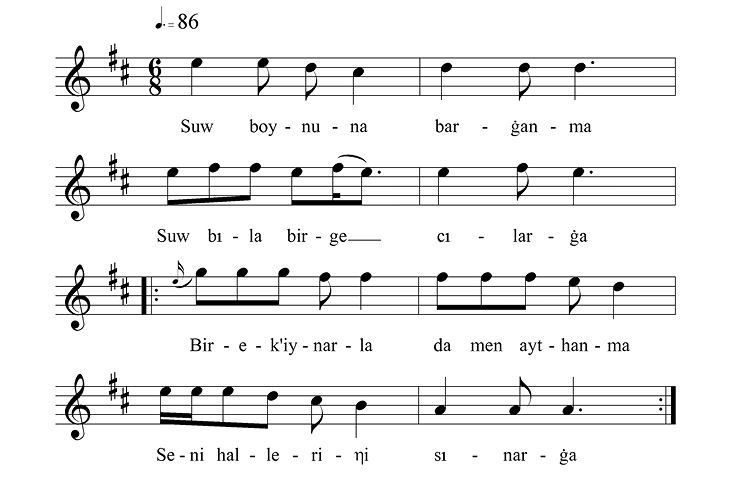
Ex.7.5. Four short lines with (5) main cadence
